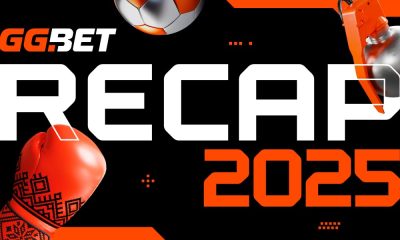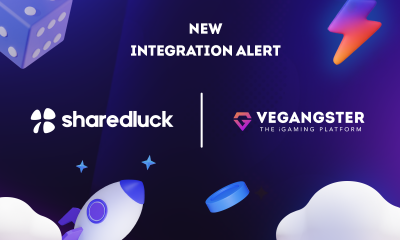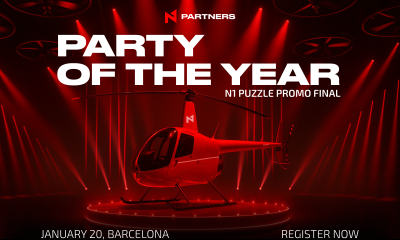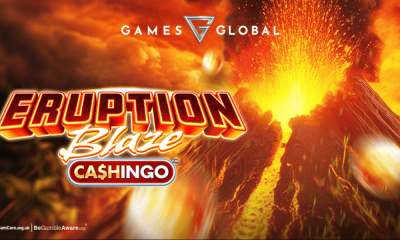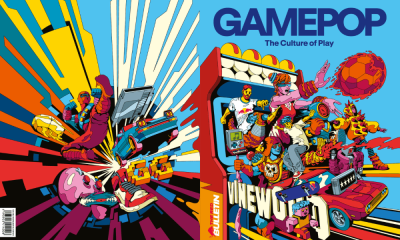eSports
Game Changers: A Roundtable on the eSports Revolution

Over the last decade, a significant cultural shift has occurred in the entertainment industry. Esports, the organized and competitive form of video gaming, has gone from a fringe interest to a global sensation, captivating millions of fans and bringing in billions of dollars in revenue. This rapid rise has not only transformed gaming from a casual hobby to a legitimate profession but has also firmly established itself in mainstream culture, challenging traditional sports and revolutionizing the entertainment industry as a whole.
Esports, short for electronic sports, has evolved into a flourishing industry encompassing competitive gaming, live events, sponsorships, media coverage, and an ever-growing fan base. As technology advances, so does the potential for esports to redefine what it means to be a spectator and participant in the world of sports and entertainment. With a structure that mirrors traditional sports leagues, including professional teams, star players, and devoted fan communities, esports has become an influential force, making a significant impact on the gaming world and broader society.
For this roundtable, European Gaming spoke to Kevin des Lauriers, CEO at J3STER, and Kirill Nekrasov, Product Officer at BETBY to delve deeper into the rise of esports, examining the factors behind its explosive growth, the influence it wields across various industries and the exciting possibilities that lie on the horizon. By understanding the transformative power of esports and the remarkable journey it has undertaken thus far, we gain insights into a phenomenon that continues to reshape entertainment, challenge societal norms, and captivate a generation of enthusiasts.
How is the rise of esports changing the way people interact with games?
KDL: Globally, we’re seeing a big increase in arenas being built specifically to draw in fans of esports. We’re also seeing a rise in LAN events across the world, with competitive and even casual players now putting together teams in order to get involved. Smaller sponsors are putting on more tournaments, and there seems to be a plethora of new leagues being created for any and every game imaginable – not just the usual titles, such as Warzone and League of Legends.
KN: There is a vast increase in viewers who passionately follow certain teams and particular disciplines within esports, whether that be soccer, ebasketball or any other sport that they like. This engagement ultimately acts as the spark for viewers to become participants, following in the footsteps of their favourite esports players, getting involved at an amateur level and engaging with the esports that they enjoy most.
Influencers are often the faces of esports. What impact do these figures have on the industry?
KDL: In the industry, we’re in an interesting spot where influencers currently have a lot of power. Prominent players can discover and highlight exploits in games, effectively pushing game publishers to release patches and fixes more frequently. These publishers are also clamouring to release new features to keep these influencers happy and engaged, otherwise they risk them moving on to the next big thing.
There are armies of community managers working with game publishers, ready to provide influencers with gifts such as giveaway items for their fans, card packs, in-game content such as skins and more. Winning these influencers over is a surefire way to garner a positive reception in the esports sphere.
KN: In many industries, influencers are becoming more high-profile, garnering trust amongst audiences and shaping trends. These people within the esports industry are no different, whether they are players who were already in the public eye, or streamers who have amassed an organic following. However, the impact of these figures can both be positive and negative.
If influencers enter the world of esports solely to generate quick success and garner hype, without having an esports background or a noticeable passion, then this can have a negative impact on the long-term development of the industry. If they do not enjoy the content, or understand the complexities and depth of esports, passionate fans will see through this attempt to engage with them and be turned away.
This can reduce the quality of new entrants. Some may also use their popularity to promote products or events that do not align with the values and needs of the esports community. This can also create a negative perception among fans.
Following that, what is the main appeal for both players and influencers to get involved in esports?
KDL: Most influencers are pros (or ex-pros), which effectively makes this relationship analogous to the classic sports commentators. They educate us on how good these “new players” are, and what we can strive to become – or simply admire from afar.
However, pro esports players arguably aren’t as well-known today as the players we grew up with in classic sports. Some influencers host watch parties of big esports events, helping their fans to understand a little bit more about the teams and their players, which opens it up further for newcomers to get involved.
KN: Doing something you love and are passionate about, and competing at a competitive level cannot be underestimated. Entering esports, whether as a participant or influencer, should be a long-term commitment rather than just a temporary one. The esports community is incredibly passionate and this is a key selling point to getting involved, to be surrounded by like-minded people who care about the industry.
Being fully committed can bring a long-term career, and being able to participate in professional competitions, and potentially creating your own brand and personality that generates a following.
In your own opinion, how do you think you’re pushing innovation within the esports industry?
KDL: On paper, J3STER is everything that Twitch influencers and viewers can wish for – community, engagement and monetization. We focus on creating lines for each influencer based on their match data, with the odds generated being unique to that influencer and their community.
Our mission is to increase the influencer’s ability to monetize without requiring any further work. J3STER does all of the work through seamless API integrations. Influencers can sign up through their Twitch account, connect their game data through our publisher API connections, and then send the link out to their viewers. This process can be completed in less than one minute.
For viewers, they have an alternative to tipping through Twitch streams, as each bet placed through J3STER gives the viewer the opportunity to tip the streamer directly. Of course, when there’s a bet on the line, each viewer is much more engaged in the outcome of the influencer’s match.
KN: BETBY has been actively innovating the esports industry since its inception. We started our journey in esports with the Betby.Games project, which is a unique opportunity for bettors to wager on the most popular esports disciplines, providing 24/7 availability, and minimising human error.
Something which is a big bonus to our brand is our trading department, with many being esports fans themselves. Because of this, they are actively searching for new and unique markets and tournaments for our brand to be involved with, and expanding our offering. BETBY was the first company to offer its customers markets on the Pokémon UNITE Championship, Team Fortress 2 and Trackmania.
Of the latest product releases, it is worth highlighting our Betbuilder, which allows you to make combo bets within a single match, and which has already gained recognition among esports fans thanks to the exciting nature of these types of bets.
What are your predictions for the future of esports?
KDL: The eyes on esports have now reached the point where marketers simply cannot resist or oppose it any longer. I believe that, within the next five years, we’ll have more people tune in to watch a major esports competition than will tune into the Superbowl.
It’s also absolutely plausible that esports will very soon have the same energy behind it that the World Cup has – but this will require influencers with the necessary reach and power. Also, which game will headline? Will it be League of Legends, one of the biggest and longest-standing esports games, or perhaps Counter-Strike? Call of Duty is also another contender, as its recent huge rise in popularity is notable.
If the legions of gamers and influencers within the esports industry cannot decide on a headlining game – in order to give esports an ‘identity’ – everything will continue to be grouped under the umbrella of ‘esports’, which could diminish its potential. Evolution is necessary, and I believe it’ll happen very quickly.
KN: The esports industry will certainly continue to grow and become even more professional. In the context of betting, this will mean a transition to a more professional relationship between market participants, whether it is obtaining broadcast rights or using data.
For spectators and fans of esports, the events will become more exciting as participation increases. We are also seeing a strong development in production standards from tournament to tournament, and this is really incredible to see. In addition, I personally expect an active expansion of esports on mobile devices which will widen the audience and will also help the emergence of a couple of exciting new disciplines in the industry.
CS2
GG.RECAP 2025: How GG.BET Bridged the Gap Between Football and CS2
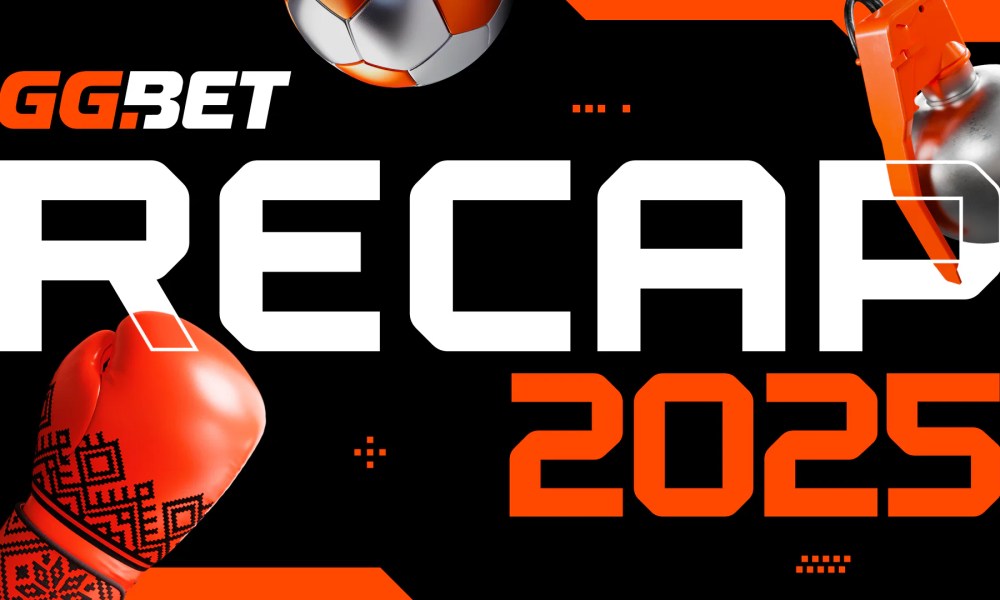
Editor’s Take
Why this matters: While many operators treat sports and esports as separate silos, GG.BET spent 2025 actively dismantling that wall. Their strategy isn’t just about slapping logos on jerseys; it’s about content crossovers. Events like the “Match of LeGGends”—where pro footballers played Counter-Strike against NAVI—demonstrate a sophisticated understanding that the modern bettor is often a hybrid fan. This cross-pollination strategy is likely the future of betting marketing.
The Full Story
GG.BET, the international betting brand, has released a comprehensive video recap of its 2025 activity, showcasing a year defined by major traditional sports sponsorships and innovative projects that blurred the lines between the pitch and the server.
The recap, which details the operator’s expansion in both the sports and esports verticals, highlights a strategy built on immersive content rather than passive branding.
Traditional Sports: Boxing and Football In the world of traditional sports, GG.BET secured high-visibility partnerships. The brand served as the official partner for the heavyweight clash between Usyk and Dubois II, executing a global media campaign at Wembley Stadium.
In Ukraine, a key licensed market for the brand, GG.BET solidified its football presence by signing a three-year contract with the legendary FC Dynamo Kyiv, alongside sponsorships of FC Polissya and FC Zorya.
-
The “Dynamo 3.0” Campaign: To celebrate Dynamo Kyiv’s 30th championship, GG.BET hosted a “star-studded” press event featuring a short film on the team’s history, custom jerseys, and fan-centric activations, moving beyond standard sponsorship duties.
Esports Innovation: Mapping the Industry GG.BET continued to lead in its native esports territory. A standout project was the launch of the Interactive Esports Map in collaboration with Esports Charts. This tool provides users with retrospective data on global esports trends, including regional top disciplines and prize fund statistics.
The brand also focused on industry education, organizing the “Ukraine in Esports: Myth vs Fact” panel at the SBC Summit Ukraine and curating a unique “Esports Museum” to display legendary trophies and history.
Blurring the Lines: The “Match of LeGGends” Perhaps the most distinct initiative of 2025 was the “Match of LeGGends: Server Derby.” This crossover show match saw the current NAVI Counter-Strike 2 roster face off against footballers from Dynamo Kyiv inside the game server.
-
The Format: GG.BET designed unique game modes and special rules for the event, which was streamed with commentary from major figures in sports and entertainment. The project successfully introduced traditional sports fans to esports mechanics and vice versa.
Industry Recognition The efficacy of this hybrid communication strategy was acknowledged by the wider industry, with GG.BET securing the Operator of the Year in CEE title at the EGR Global Europe Awards 2025.
The post GG.RECAP 2025: How GG.BET Bridged the Gap Between Football and CS2 appeared first on Gaming and Gambling Industry Newsroom.
eSports
TEAM VITALITY RUN IT BACK FOR THEIR 2026 LEC ROSTER

- Team Vitality is kicking off the new LEC season with renewed energy and a hunger to prove themselves on the international stage.
- With superstar mid laner Marek “Humanoid” Brázda joining the lineup, alongside the support of an experienced coaching staff, the club is confident in its ability to compete at the highest level in 2026.
- The squad’s goal is straightforward: become a top team in the LEC and qualify for Worlds in North America next year.
- Next year marks a new chapter in the club’s long-term strategy to develop and elevate European talent, creating an environment built to deliver results.
Team Vitality is proud to present its new LEC roster for 2026. Throughout the upcoming season, the club aims to build on its existing core and further develop the team’s talent, while welcoming a new mid laner and a strategic Head Coach to elevate performance.
BACK WITH NEW FIREPOWER
The stage is set, and Team Vitality returns to the LEC more determined than ever. At the heart of this ambitious new roster is Kaan “Naak Nako” Okan, the Turkish superstar top laner, who will anchor the team. With the roster built around his talent, communication, and leadership, Team Vitality aims to make a deep run and achieve its first EMEA title.
Roster composition
- Kaan “Naak Nako” Okan (Turkish) – 20 years old: The centrepiece of Team Vitality’s project, Naak Nako is an incredibly talented player known for his versatility and impact. A former high-level volleyball player, he began his professional League of Legends career in 2022 with Fenerbahce. Team Vitality then picked him up in December 2023, spent a year developing in the academy, and promoted him to the main roster, bringing both potential and dedication to the LEC squad.
- Linas “Lyncas” Nauncikas (Lithuanian) – 21 years old: The hardworking engine of Team Vitality, Lyncas brings his relentless drive and consistency to the refreshed roster. Having played for several teams in the ERL and EMEA Masters, he was recruited by Team Vitality in May 2024. Now entering his third year in the LEC, Lyncas combines experience, adaptability, and a deep understanding of the league to power the team’s 2026 ambitions.
- Marek “Humanoid” Brázda (Czech) – 25 years old: A veteran of the LEC scene and one of its most consistent mid laners over the past five years, Humanoid is repeatedly ranked among the league’s top 3 midlaners and has qualified for Worlds multiple times with rosters such as Fnatic and MAD Lions. Joining the Hive, Humanoid reunites with longtime teammate and fellow Czech Carzzy, bringing renewed motivation, experience, and leadership that the club hopes will translate into success and lead them to the Worlds stage.
- Matyáš “Carzzy” Orság (Czech) – 23 years old: Consistently recognised as one of Europe’s best ADCs, Carzzy enters his seventh LEC year with a wealth of experience and a proven track record, having previously lifted three LEC trophies with MAD Lions. He brings a great personality as well as undeniable skill to Team Vitality. This season, he looks to flourish alongside his new teammate Humanoid, building strong synergy and impact in the hopes of bringing the teams to new heights.
- Kadir “Fleshy” Kemiksiz (Turkish) – 24 years old: Having played for Vitality.Bee for seven months, Fleshy was promoted to the main roster last year ahead of the Summer Split. He quickly made his mark in the scene by bringing stability and reliable performances to the bot lane, leaving a strong impression on fans and teammates alike. Now entering his first full year in the LEC, Fleshy is ready to fully prove himself and make a lasting impact on Team Vitality’s road to Worlds.
Coaching staff
- Patrick “Pad” Suckow-Breum (Danish) – Head Coach: A competitor through and through, Pad brings a lifelong passion for sports, having previously competed at a high level in football. He has been a coach in League of Legends since 2017, taking his first steps into the LEC with MAD Lions in 2020. Joining Team Vitality in December 2023 alongside Head Coach Mac, Pad is now taking the next step in his career as the team’s Head Coach, ready to lead Team Vitality to new heights with his experience, discipline, and vision.
- Danusch “Arvindir” Fischer (German) – Strategic Coach: An ambitious coach, Arvindir began his career in professional League of Legends as an analyst for top LEC organisations, including SK Gaming and Splyce, before transitioning into coaching. He has worked across all the major ERL leagues, including a 3.5-year tenure at BIG, before moving on to KOI and Team BDS Academy, where he led the team to victory in the 2024 EMEA Masters Summer Split. Joining Team Vitality in 2025 as the Head Coach of the LFL roster, he has proven his worth in developing Vitality.Bee, and has now been promoted to Strategic Coach of the LEC team.
- Luka “Lukezy” Trumbić (Croatian) – Assistant Coach: Lukezy has been involved in competitive League of Legends since 2014, initially as a semi-pro player before transitioning to coaching in 2023. He has previously worked with UCAM and NNO, gaining valuable experience across several competitive environments. Joining Team Vitality in December 2024, Lukezy now enters his second LEC season as the team’s Assistant Coach, where he has a hands-on role in player development.
”The addition of Marek to the roster reflects our strategic ambitions for the upcoming LEC season. Over the past 18 months, we have focused on developing Lynacs and Naak, making 2026 a key performance year for the team. We are confident that we now have all the pieces in place to compete for the top positions in LEC. While this season will be decisive, our team thrives under pressure, positioning us well to meet the challenge.” explains Patrick “Pad” Suckow-Breum, Head Coach of the team.
A NEW ERA BEGINS
With a clear goal in mind of reaching the international stage, Team Vitality enters 2026 determined to make this its breakthrough season. The team’s mission is bold, yet simple: establish itself as a top contender in each LEC split and secure qualification to Worlds. The organisation is committed to elevating European talent and building a team capable of competing at the highest level.
“We are building on the momentum from 2025, with results continuing to improve. We’ve added experience and an X-factor in a key position, in the hope that this will serve as a catalyst to confirm the potential of the young players we backed last year. We are confident that they can demonstrate that European talent is capable of competing for the qualifying spots at the World Championships.” says Fabien “Neo” Devide, President and co-founder of Team Vitality.
See you at the LEC 2026 Versus tournament in Berlin, starting on January 17th for the beginning of the competition!
The post TEAM VITALITY RUN IT BACK FOR THEIR 2026 LEC ROSTER appeared first on Gaming and Gambling Industry Newsroom.
Asia
Insurgence Gaming Company Introduces La Imperia, a Community-First All-Female VALORANT Tournament

La Imperia, a new all-female esports IP by The Insurgence Gaming Company, will make its competitive debut this month with an online VALORANT invitational tournament running from December 19 to 21, 2025. Designed as a visibility-first platform for women competitors, the event brings together four invited Indian teams for a three-day broadcast competition.
La Imperia marks the inaugural tournament by the Insurgence Gaming Company, a newly founded esports company led by Jasper Shabin, who previously served as a poject manager at Skyesports. Positioning itself as a community-first tournament operator, the Insurgence Gaming Company aims to refocus attention on grassroots competition and long-term ecosystem building at a time when entry-level and women-led esports pathways remain limited.
The tournament will be played in VALORANT and feature a round-robin group stage followed by single-elimination playoffs, culminating in a BO5 Grand Final. All matches across the three days will be broadcast live on YouTube, along with additional watch-parties.
The four invited teams competing at La Imperia include Huntrix, Sin Sisters, Plushie Gang and MyKil. All teams feature all-female rosters, aligning with La Imperia’s positioning as a dedicated women’s esports IP.
Broadcast production for the event will be handled by Momentum Gaming, serving as the official Broadcast Partner. The on-air talent lineup includes Star Tania, Nekroz, Odawg, and Hikari Jane, who will guide viewers through the tournament across all three days.
Beyond competition, La Imperia is also placing emphasis on player well-being. Sattva by Pallavi joins the tournament as the Mental Health Partner, integrating conversations around mental health and holistic wellness into the event’s broadcast and content output. The partnership reflects a growing recognition of sustainability and mental resilience within competitive gaming environments.
Speaking on the launch, Jasper Shabin, Founder of The Insurgence Gaming Company, said: “La Imperia is built to be a visibility platform first. There is no shortage of talent in the women’s VALORANT scene, but there are very few consistent stages where that talent can be seen, supported, and taken seriously. With the Insurgence Gaming Company, we want to return focus to grassroots competition and create formats that players can grow with, not just compete in once.”
The tournament carries an INR 15,000 prize pool, with the primary focus placed on competitive exposure, broadcast quality, and long-term ecosystem value rather than one-off incentives.
With its inaugural edition, La Imperia sets the foundation for a new women-led esports property in India—one that combines structured competition, professional broadcast standards, and a community-first philosophy.
The post Insurgence Gaming Company Introduces La Imperia, a Community-First All-Female VALORANT Tournament appeared first on Gaming and Gambling Industry Newsroom.
-

 Latest News5 days ago
Latest News5 days agoVegangster Gives Operators Real-Time Jackpot Control and a New Revenue Stream with Sharedluck’s JackpotX
-

 Latest News4 days ago
Latest News4 days agoRegistration Open: N1 Puzzle Promo Show & Winner Announcement in Barcelona
-

 David Reynolds Director of Games Strategy & Partner Management at Games Global7 days ago
David Reynolds Director of Games Strategy & Partner Management at Games Global7 days agoGames Global and Slingshot Studios expand Cashingo™ series with Eruption Blaze Cashingo™
-

 Latest News6 days ago
Latest News6 days agoTop 5 Newest High-RTP Slots at Social Casinos This Month
-

 Compliance Updates6 days ago
Compliance Updates6 days agoFinland’s Gambling Reform Is Official – What Happens Next?
-

 Central Europe6 days ago
Central Europe6 days agoScatterKings adds sugar-coated spin to Austria with bespoke win2day partnership
-

 Gamepop7 days ago
Gamepop7 days agoGAMEPOP: The Culture of Play by Red Bull Media House – the first bookazine devoted entirely to video game culture
-

 affiliate marketing3 days ago
affiliate marketing3 days agoSOFTSWISS 2025: 45% Game Portfolio Growth, LatAm Extensive Expansion and Flagship iGaming Trends Report



